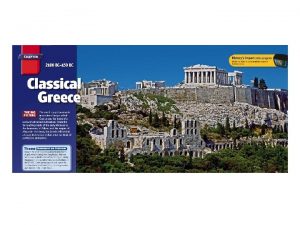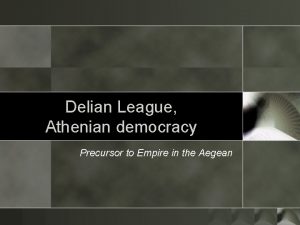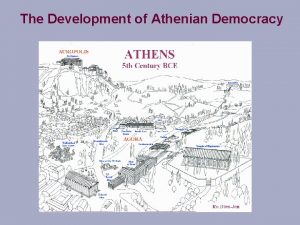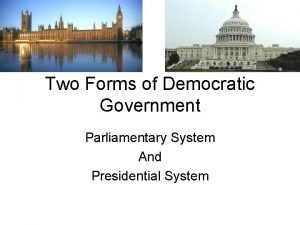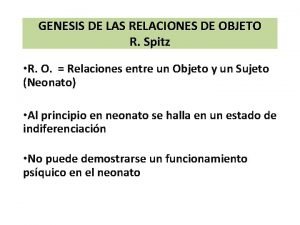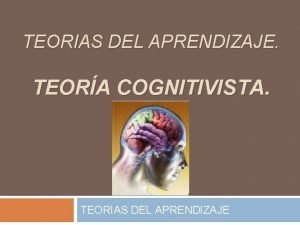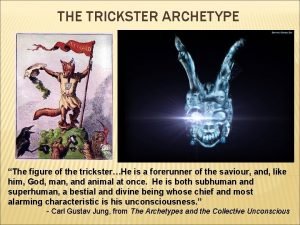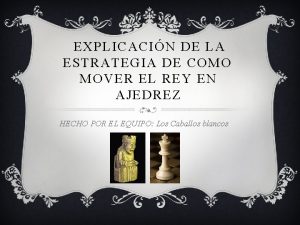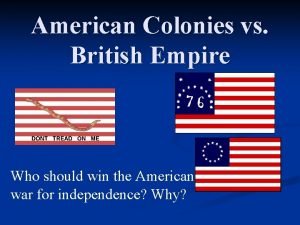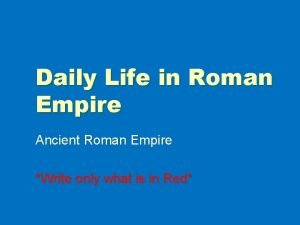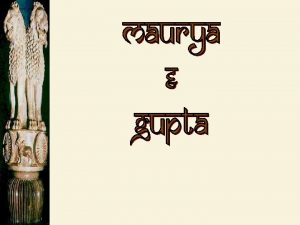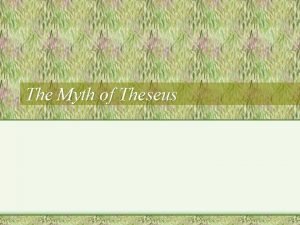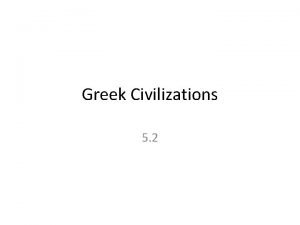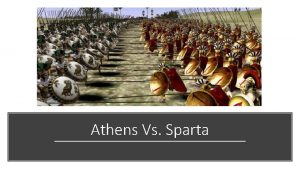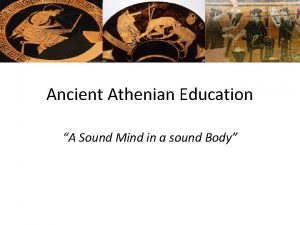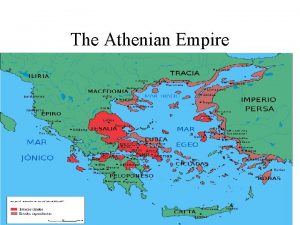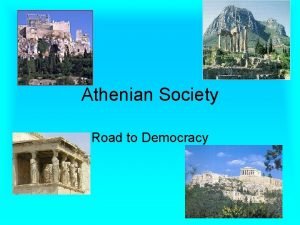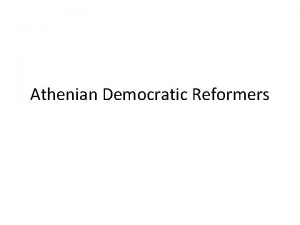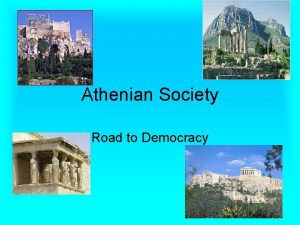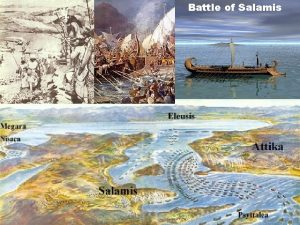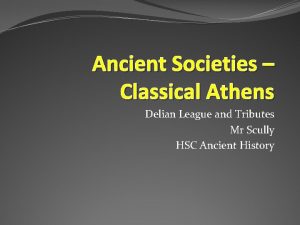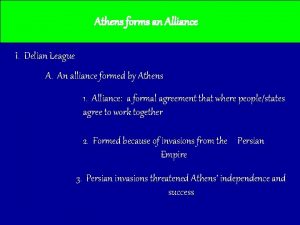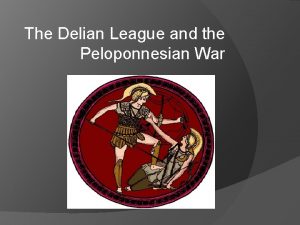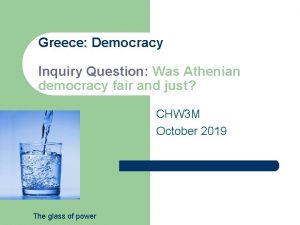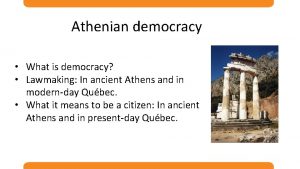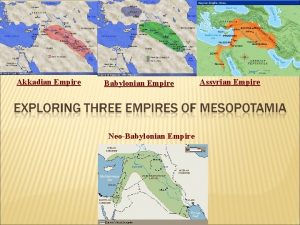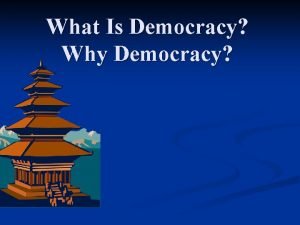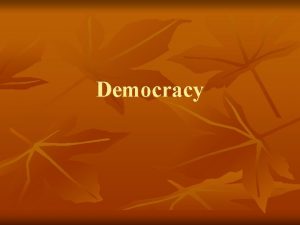Delian League Athenian democracy Precursor to Empire in

































- Slides: 33

Delian League, Athenian democracy Precursor to Empire in the Aegean

After the Persian Wars o When Platea and Mycale were won, no one knew for sure that the Persian threat was over. o Spartans returned to defense of the Peloponnesus, but Athens continued to press the Persians by sea for all Greece. o The Greeks who opposed Persia found a new sense of cultural identity. o Athenians led a new alliance devoted to prevent further Persian incursions. o As most powerful and populous of Greek poleis, Athens’ coffers would fill with tribute money from other cities to provide leadership against the Persians.

Formation of Delian League o 477 saw the first meeting of reps of Greek cities at the island of Delos (hence Delian). o Oaths were sworn, binding their cities to defense of all Greece. o Policy was formed by all poleis in assembly, but Athenian generals were to enforce those policies. o At first the money collected was deposited on Delos, but was clearly controlled by the Athenians. o Some poleis paid tribute in the forms of ships rather than cash. o Sparta was conspicuously absent; they were isolationist.

Athens as top dog o Leadership in the Delian league benefited Athens’ economy. o Most agree that Athens used this windfall to build a model democracy. o For many, government became a career when money became available to remunerate for public service. o Lower-class rowers on Greek triremes had saved Athens, now they would be given more of a voice as citizens. o Athens would incur resentment from other Greeks when they would come to depend on this higher standard of living, and insist upon the League’s perpetuation: Empire.

Preserving an empire o Cities were threatened with reprisal if they left the league, and new cities were forced to join. o Part of the agreement was preservation of the integrity of each city, but Athens made judgments as to what was necessary in view of the foreign threat. o Athens was demanding protection money and was essentially forming an empire. Until his ostracism, Themistocles encouraged imperial designs and competition with Sparta. o This direction was almost avoided by the brief ascendency of Cimon, son of Miltiades.

Cimon the strategos o Cimon was an Athenian general who distinguished himself “cleaning up” the Aegean for the Delian League. o He drove Persians from Eion at the mouth of the Strymon, most important remaining stronghold of the Persians west of Hellespont. o He drove pirates from the island of Scyrus and Athens annexed it. o Most sensational, on Scyrus Cimon won unfading glory by discovering the bones of Theseus and returned them to Athens. o In 468 he won decisive land sea battles over the Persians in southern Asia Minor destroying hundreds of ships at Eurymedon.

Cimon’s political career o After Themistocles was ostracized, Cimon was the leader Athenians turned to. o He symbolized the success of the Delian League and was an aristocrat. o Somewhat bland but dignified, Cimon led idealogues who favored alliance with Sparta. o He was opposed by anti-Spartan and democrat Ephialtes and his associate Pericles, son of Xanthippus.

Earthquake in Sparta: fate takes a hand o In 464 an earthquake leveled the five villages of Sparta. o Cause was attributed to massacre of helots who had sought sanctuary at temple of Poseidon. o Helots in Messenia choose that moment to revolt and win an early victory over the Spartans, and pressed the revolt for four years. o The Spartans, who had been threatening Athens with war over her imperial designs now asked for help in quelling the rebellion.

Helot rebellion Naupactus * Athens * Mt. Ithome * * Sparta

Athens sends help o Athenians split over sending help. Cimon overcomes democratic opposition and leads 4000 hoplites to help put down the Helots. o At stake was the issue of Spartan alliance and democracy in Athens, and thus the leadership and integrity of Cimon, then at his zenith of power. o The Athenians joined other Greek states in helping Sparta besiege the fortress of Ithome in SW Messenia. o But they were surprised that the Helots were not “sub-men, ” but reasonable Greeks.

Fall of a Laconiaphile o The Athenians were unable to take the fortress. o The Spartans then dismissed the Athenians, supposedly fearing their “adventurous and revolutionary spirit. ” o Cimon was disgraced and it was shown to be futile to expect friendship from the jealous Spartans. o Now labeled a laconiaphile, Cimon was ostracized and exiled for ten years. o The Athenians now gave sanctuary to Helot rebels at Naupactus, thus thumbing their noses at Sparta.

Areopagus and assassination o Ephialtes had capitalized on Cimon’s absence in Messenia by pushing through reforms that diminish the power of the Areopagus, stripping them of all politically-significant powers. o Council of Areopagus was reduced to jurisdiction in murder cases, care of the sacred olive trees, and minor religious duties. o Soon after Cimon’s ostracism in 461, Ephialtes is assassinated. o Pericles emerges as the most powerful leader of the democracy-minded Athenians.

Periclean foreign policy o Pericles dominated Athenian politics for thirty years. o The foreign policy of Athens now changed, leaving alliances with Sparta and her allies and allying with Argos and Thessaly. The enemies of Sparta. o These policies ran afoul of Corinth and Aegina, which eventually joined forces against Athens. o It started when Megara defected to the Athenian side in 459, giving Athens an effective control of the eastern Corinthian gulf.

A hot war between Greeks o Corinth felt threatened by Athens, economically and militarily, skirmishes ensue. o In 458, a Peloponnesian fleet engages the Athenians off the Argive coast and loses. Alarmed, the Aeginians enter the war. o Athens wins naval and land engagements, besieges Aegina. o Aeginans surrender in 456 and join the Delian league as a subject state.

Athenians overextend themselves o The Lybian rebel Inaros asked the Delian forces to support his invasion of Persianheld Egypt. o The time looked ripe following Xerxes’ assassination and troubles at the Persian court. o The fleet is transferred from Cyprus to Egypt and helps in the capture of Memphis in 459. o In 456, “high and dry, ” the Greeks lose Memphis, hundreds of ships and perhaps as many as 40, 000 lives. o Despite the losses, Pericles retains his power.

Possibility of Peace? o War places a tremendous strain on resources and Athens began to long for relief. o In 452 Cimon was recalled from exile and settled a five-year truce with Sparta, while the Argives signed a thirty year peace treaty with Sparta. o Athens and allies used the truce to resume warfare against Persia. o In 449 Cimon dies besieging the Persians at Cyprus, and his death motivated Pericles to conclude a peace with the Persians in 448. o Cyprus comes to be dominated by Phoenician allies of Persia.

Antebellum Athens Eve of the Peloponnesian War

445: partial collapse of empire o 445 was a crucial year for Athens. o Aristocracies recover many poleis governments. o Various parts of the Athenian empire began to chafe: Euboea and Megara revolted at the same time. o Pericles fights on two fronts until Spartans threaten Attica from the south. Pericles unites armies in the south. o King Pleistoanax withdraws but Megara realigns with Sparta, Boeotians form own league. o Athenians forced to sign a peace with the Spartans.

The “Thirty Years” Peace only lasted fourteen years. o Athens was humiliated out of fear of Spartan invasion. o Surrendered Megarian ports. o No ally could switch sides. o Neither side could interfere with the others’ allies, but each could deal with its own allies without interference. o The peace would end with the beginning of what we call the (second) Peloponnesian War that began in 431.

Positioning of Democracy o Under Pericles Athens became an imperial power and a democracy. o As Strategos and leader of democratic ideologues, Pericles instituted liturgies as a taxation system for the wealthy. o Liturgies were a system of patronage of arts and military in service of Athens. o Strategoi became the most powerful politicians due to trust and esteem. o But power in Athens was diluted by the lot and the diffusion of power among many “voluntary” public servants.

Periclean Antebellum Athens o Imperial tribute and liturgies made Athens a dominant cultural center. o The Acropolis was remade with its Parthenon, Temple of Athena Nike, and the Erektheion of Poseidon. o Athenians expand trade and form true colonies to exchange wares. o Metics, foreign traders and artisans, flock to Athens, attracted by democracy and the byproducts of Empire.

Greek Architecture o Though they lived in wooden houses, Greeks built permanent structures in stone for religious centers. o These were the earthly dwellings of gods, containing their image and accoutrements. o Three types of temples that emerged corresponded to three types of architecture: Ionic, Doric, and Corinthian, the latter not emerging fully until the fourth century.

Architecture of Athens From the time of Pericles

The Acropolis o For the first time in history, architects, not priests, directed these building projects. o The Parthenon in Athens, was built in 447 -438 BC by the architects Ictinus and Callicrates. o During the Classical period (450 -330 B. C. ) three important temples were erected on the ruins of earlier ones: the Parthenon, the Erechtheion, and the Temple of Nike. o The Propylaea was the monumental entrance to the sacred area.

The Parthenon o The Parthenon is the largest building on top of the Acropolis. It was dedicated to Athena Parthenos. o It was completely made out of marble and surrounded by freestanding columns. o Two pediments: east, above building's main entrance, shows birth of Athena; west, fight between Athena and Poseidon to name city of Athens.

The Parthenon o This structure reflects the Doric style that emerged on the Western Aegean shore. This style was used in mainland Greece and the colonies in southern Italy and Sicily. o The Doric style is stout and uncomplicated. The Doric column has a dish -shaped top, or capital, and no base. o This building contained the treasury of Athens and later that of the Delian league.

Parthenon Detail o The entablatures (lintels), spanning the columns are also distinct, the Doric having a row of 3 vertical grooves, or triglyphs, between sculpted metopes (square spaces) and mutules under the cornice. o The pediments contained scenes like Heracles.

The Erectheion 421 -406 o The temple of Erechteus, or Erechtheum, was the last the most complex, and the most richly embellished building. o It was dedicated to the worship of the two principal gods of Attica, Athena and Poseidon Erechteus. o It is an example of Ionic, or east shore style. o The Ionic style is thinner and more elegant. Its capital is decorated with a scroll-like design (a volute). o Ionic has paired volutes at its capital and carved rings at its base.

The Erectheion o The Erechtheum is best known for its caryatid porch. o The present caryatids are copies, the originals having been moved in order to preserve them. o The inner chamber of Athena was on the east side and was perpetually illuminated. o Lamp only filled once a year!

The Agora o Large flat area at the base of the Acropolis. o Market and focal point of Athenian life. o Doric temple either to Hephaestus or Theseus. o Stoa bordered the Agora and held shops.

A time of cultural development o Orchestra of the Dionysian theatre where dramas were performed below the Acropolis. o The Temple of Athena Nike was an Ionic building built in 420 by Kallikrates on the Ionic order. o But more than architecture and drama were developing…so was historical narrative.

History as a discipline o History as a rational discipline is “founded” in this era. o Herodotus of Halicarnassus (484 -428) traveled widely conducting interviews and lecturing. o He is known for his book History that covered up through the Persian Wars. o His history depended on two criteria: eyewitness accounts and hearsay. o His purpose was to tell the stories of the struggle between East and West. o History had an explainable pattern combined with smaller lessons.

Thucydides o Herodotus has been called “the father of historical practice” (Juan Luis Vive preferred, “father of lies”). o His younger contemporary was Thucydides (460 -400? ). o An Athenian general, he was exiled and finally assassinated. o His work is a history of the first twenty years of the Peloponnesian War. o He marginalizes myth, poetry, and the Trojan War; distrusts hearsay. o History is explained by human ideas, deliberation, and decision rather than accident, fate, or the gods.
 Who were the persians
Who were the persians Delian league
Delian league The development of athenian democracy
The development of athenian democracy Parliamentary system
Parliamentary system Empire soccer league
Empire soccer league Cholesterol precursor
Cholesterol precursor Precursor do renascimento
Precursor do renascimento Lunar precursor robotic program
Lunar precursor robotic program Nietzsche como precursor de la posmodernidad
Nietzsche como precursor de la posmodernidad 5 functions of lipids
5 functions of lipids Precursor of gluconeogenesis
Precursor of gluconeogenesis Ba(me5cp)2
Ba(me5cp)2 Precursor in a sentence
Precursor in a sentence Triglicéridos formula
Triglicéridos formula Hsing-yu tuan
Hsing-yu tuan Estadio anobjetal
Estadio anobjetal Texto áureo significado
Texto áureo significado Cognoscitivismo
Cognoscitivismo Trickster archetypes
Trickster archetypes Precursor del naturalismo
Precursor del naturalismo Precursor cells
Precursor cells Trickster archetype
Trickster archetype Chaturanga precursor
Chaturanga precursor Precursor
Precursor American empire vs british empire
American empire vs british empire Rich and poor romans
Rich and poor romans Venn diagram of mauryan and gupta empires
Venn diagram of mauryan and gupta empires Pericles describes athenian society as valuing
Pericles describes athenian society as valuing Objectives of sparta to physical education
Objectives of sparta to physical education Young theseus
Young theseus Socrates was an athenian sculptor whose true love was
Socrates was an athenian sculptor whose true love was Athen vs sparta
Athen vs sparta Athens and sparta were both
Athens and sparta were both Athenian education
Athenian education
